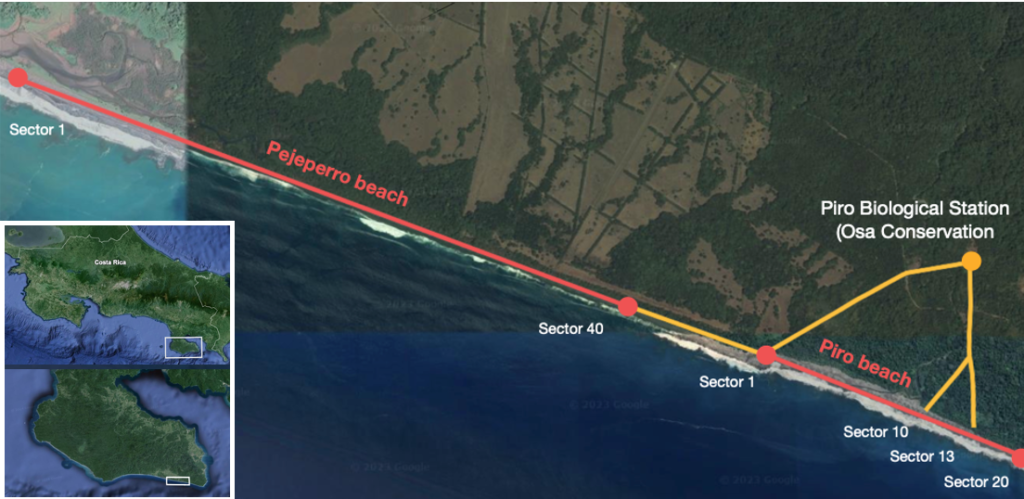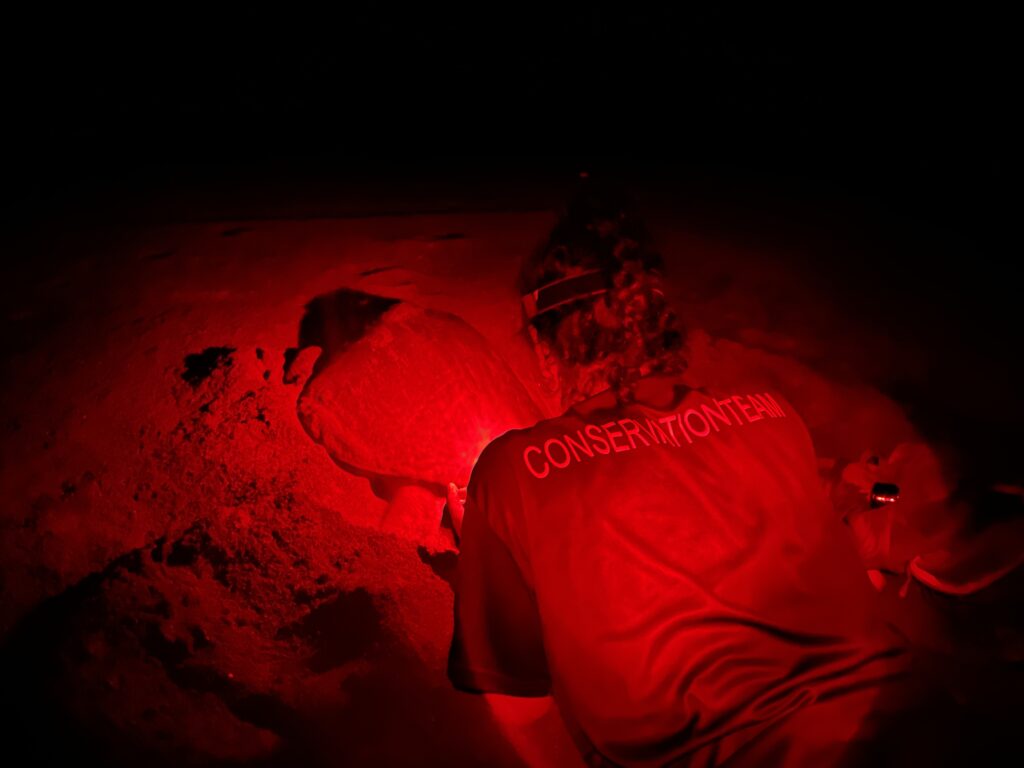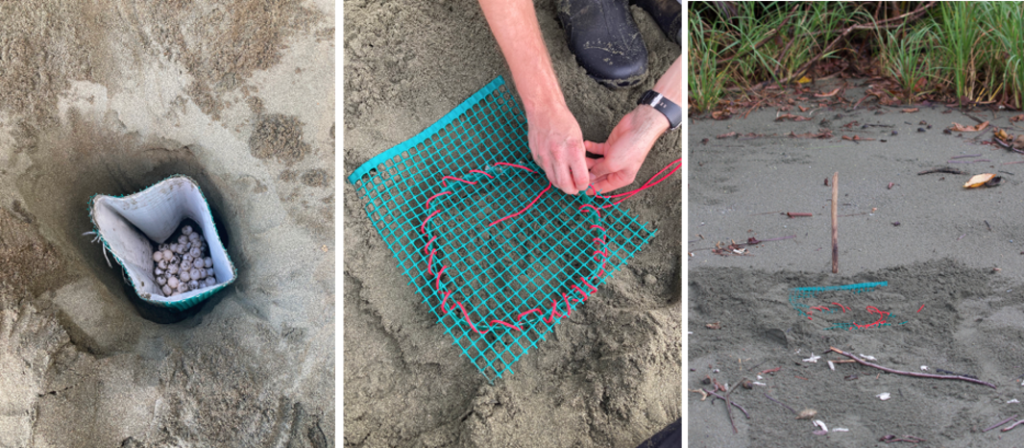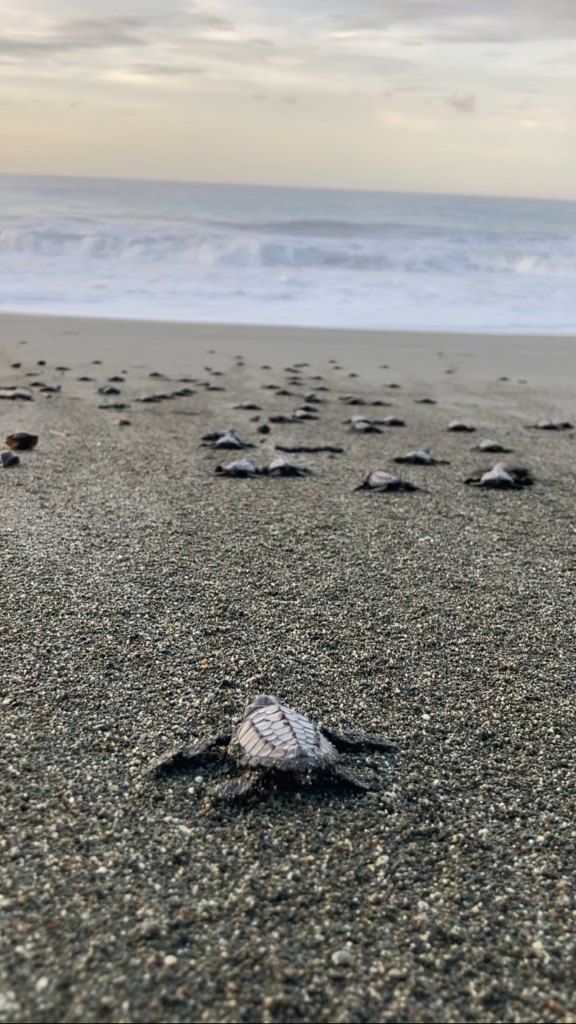Study site
The study was developed in the Osa Peninsula (Costa Rica), concretely in Piro beach.

Marking non-protected nests
First of all, 10 Olive Ridley nests were marked and left without predator-excluder systems. This was done during the night, when sea turtles emerge from the water and lay the eggs. Whenever a turtle was sighted aiming to nest, I would observe and count the number of eggs laid. Finally, we would mark the nest in order to locate it during the incubation period.

Relocating nests with predator-excluder systems
During morning census, 50 nests were relocated with the predator-excluder system (PES) in a safer site at the beach (where it would be less likely to get flooded or exposed by beach erosion).

The environmental variables assessed in every relocated nest were:
- Beach zone where the nest was relocated: Open (always sun) or Border (sometimes sun, sometimes shade)
- Depth of the nest
- Time of relocation
- Time exposed (time the eggs spent unburied)
Nests’ exhumations
During the 50 days of incubation period of the nests, we monitored all the nests (both protected and not protected) to check whether they were predated or not.
40 days after relocation, the tops of the predator-excluder systems were removed to allow the hatchlings to emerge by themselves.
50 days after relocation, all the content of all nests was taken out to do the hatching success assessment.
Hatching success was calculated as the number of eggshells (i.e. hatched eggs) divided by the total number of eggs.
